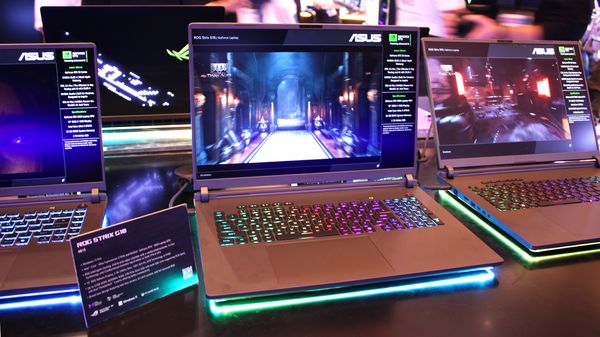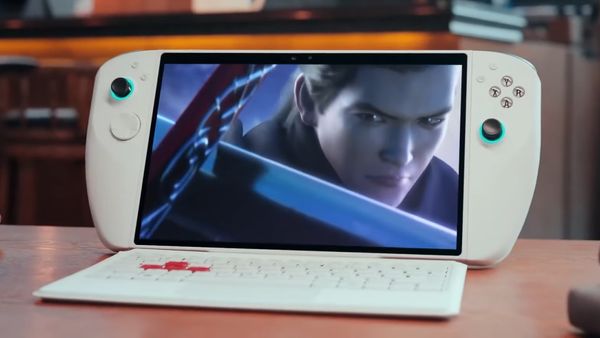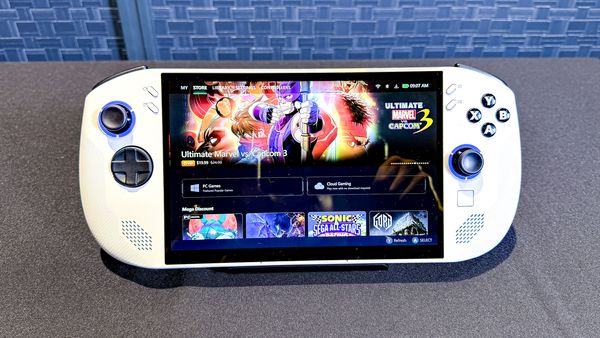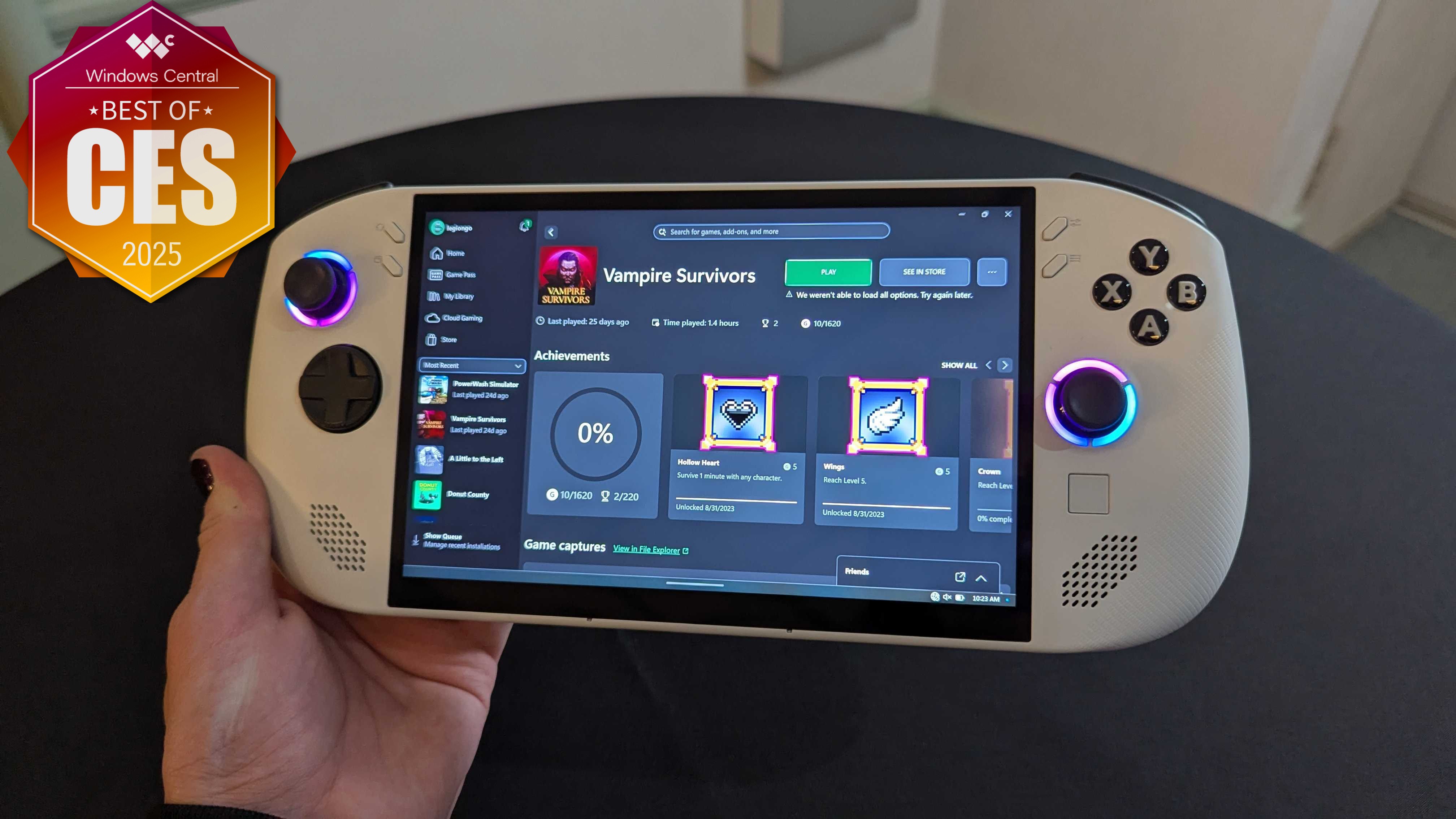
Every year in Las Vegas, the Consumer Electronics Show invites tens of thousands of companies, experts, and attendees to go hands-on with the future of consumer, commercial, and medical technology. CES 2025 saw over 141,000 guests swarm the Las Vegas strip, and I was among them for the very first time. I've been in this industry for a few years now, but it's taken me this long to finally attend CES for myself.
Now that I'm home and rested, I wanted to highlight the very best of what I saw. To be clear, you won't find a list of AI buzzwords, outlandish proofs-of-concepts, or wildly obscure tech products here. These are the seven tech products that I personally think are awesome; more importantly, all of these products are actually obtainable this year.
We've already covered the 15 winners of our "Best of CES 2025" awards at Windows Central, and we've discussed the misses and disappointments of CES 2025, too. Now, here are the top 7 coolest tech products that yours truly saw at their first CES.
1. Lenovo Legion Go S
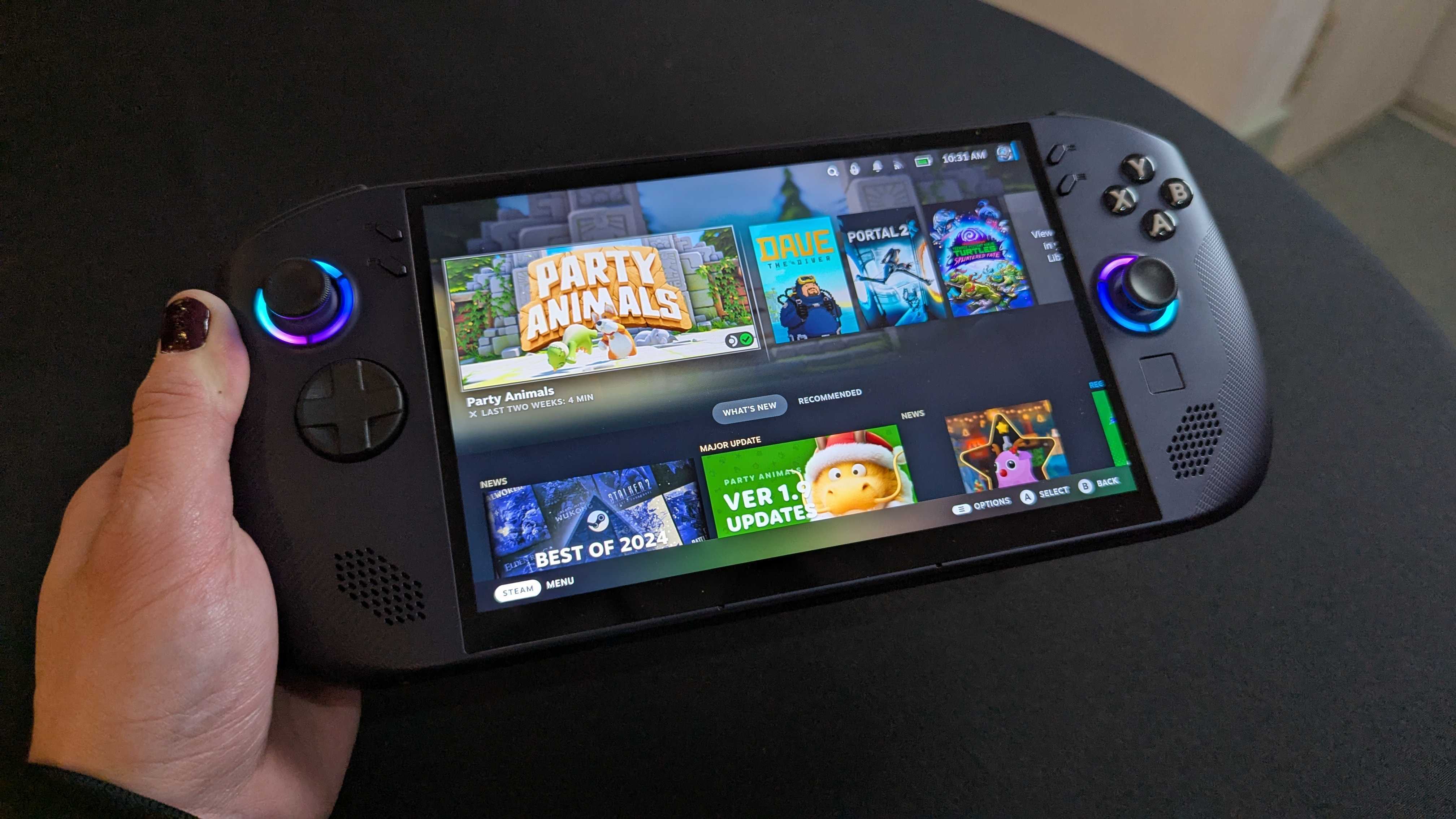
The winner of our "Best Gaming Handheld of CES 2025" award, the Lenovo Legion Go S is part of the latest generation of powerful gaming handhelds. The Legion Go S isn't quite a successor to the original Legion Go but instead is an alternative with a more polished and ergonomic all-in-one design. I was the first on the Windows Central team to go hands-on with the new hardware and quickly fell in love.
The Lenovo Legion Go S pairs an 8-inch, 120Hz IPS LCD display with a curvy plastic chassis, Hall Effect thumbsticks, and AMD Ryzen inside. I use an ASUS ROG Ally X as my primary gaming handheld, and the Lenovo Legion Go S feels just as comfortable in the hand, even with its larger display. After playing Forza Horizon 5 on the Legion Go S, I'm honestly beginning to prefer this design over the familiar ROG Ally X, which is a seriously impressive accomplishment for Lenovo.
I won't rehash everything you need to know about the Lenovo Legion Go S (you can hit the links above for that information), but I will mention that the Legion Go S boasts two unique features in the gaming handheld space. For one, it won't just come with Windows installed; in a few months, the Legion Go S will also become the first officially licensed SteamOS gaming handheld, finally giving us a true Steam Deck alternative.
I cannot wait to see more of the Lenovo Legion Go S. The Lenovo Legion Go S will be available starting Jan. 2025 with an expected price of $729.99 at Lenovo, with more affordable $500 SteamOS and $600 Windows versions expected sometime in May 2025.
2. ASUS Zenbook A14 (2025)
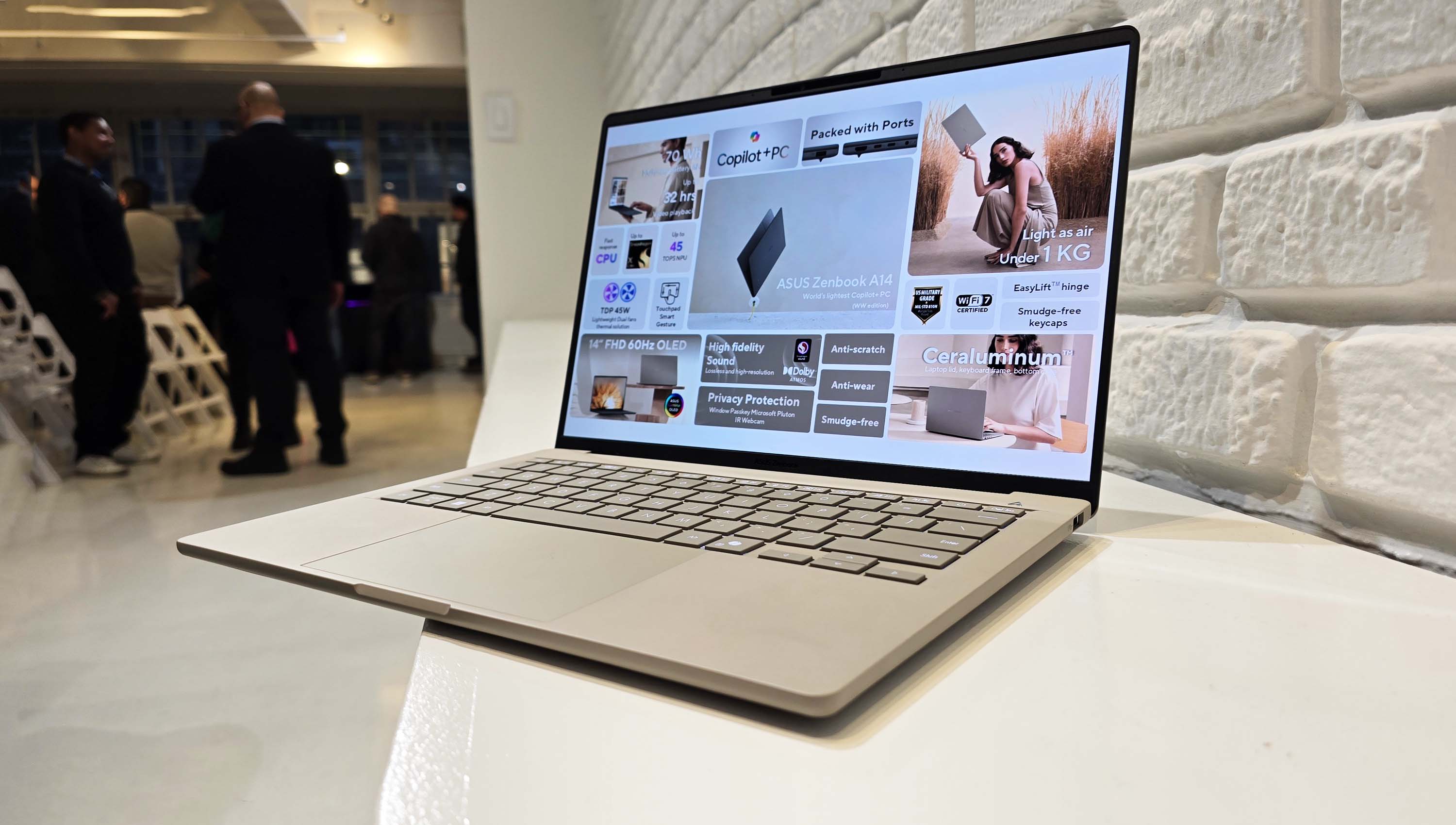
Quite possibly, the single most impressive laptop announced through all of CES (and the winner of our "Best Laptop of CES 2025" award) is the brand-new ASUS Zenbook A14. This is a 14-inch Copilot+ PC powered by the Qualcomm Snapdragon X series; in fact, this PC is one of the first to debut the new Qualcomm Snapdragon X, the most affordable chipset in the efficient ARM lineup. It's those chips that enable what makes this laptop so special.
You see, the ASUS Zenbook A14 only weighs 2.16 lbs or less than a single kilogram. That's the same weight as the Lenovo ThinkPad X1 Carbon (Gen 13) that has already amazed me (and I'm reviewing right now), but the Zenbook A14 hits such a low weight for less than half the price, and you don't have to compromise on build quality. The entire chassis is built from ASUS' custom "Ceraluminum," which is essentially magnesium coated in a lovely ceramic finish.
Despite weighing 980g, the Zenbook A14 feels rock solid and still packs a massive 70Whr battery, enabling up to 19.5 hours of web browsing on its 1200p, 60Hz OLED display. I've used this laptop and instantly fell in love — the Zenbook A14 feels absolutely incredible and certainly punches above its weight (pun intended). After all, it'll start at only $900 (although the ASUS Zenbook A14 will initially arrive in Jan. 2025 from $1,099 at ASUS, with a more affordable model coming to Best Buy in a few months).
I was ecstatic to learn that the Zenbook A14 can also be configured with up to a Snapdragon X Elite, 2.8K and 120Hz OLED display, and 32GB of RAM for those who want a more premium computing experience without losing that phenomenally light design. I can tell you the Windows Central team has been fighting over who will get to review this laptop.
3. Razer Blade 16 (2025)
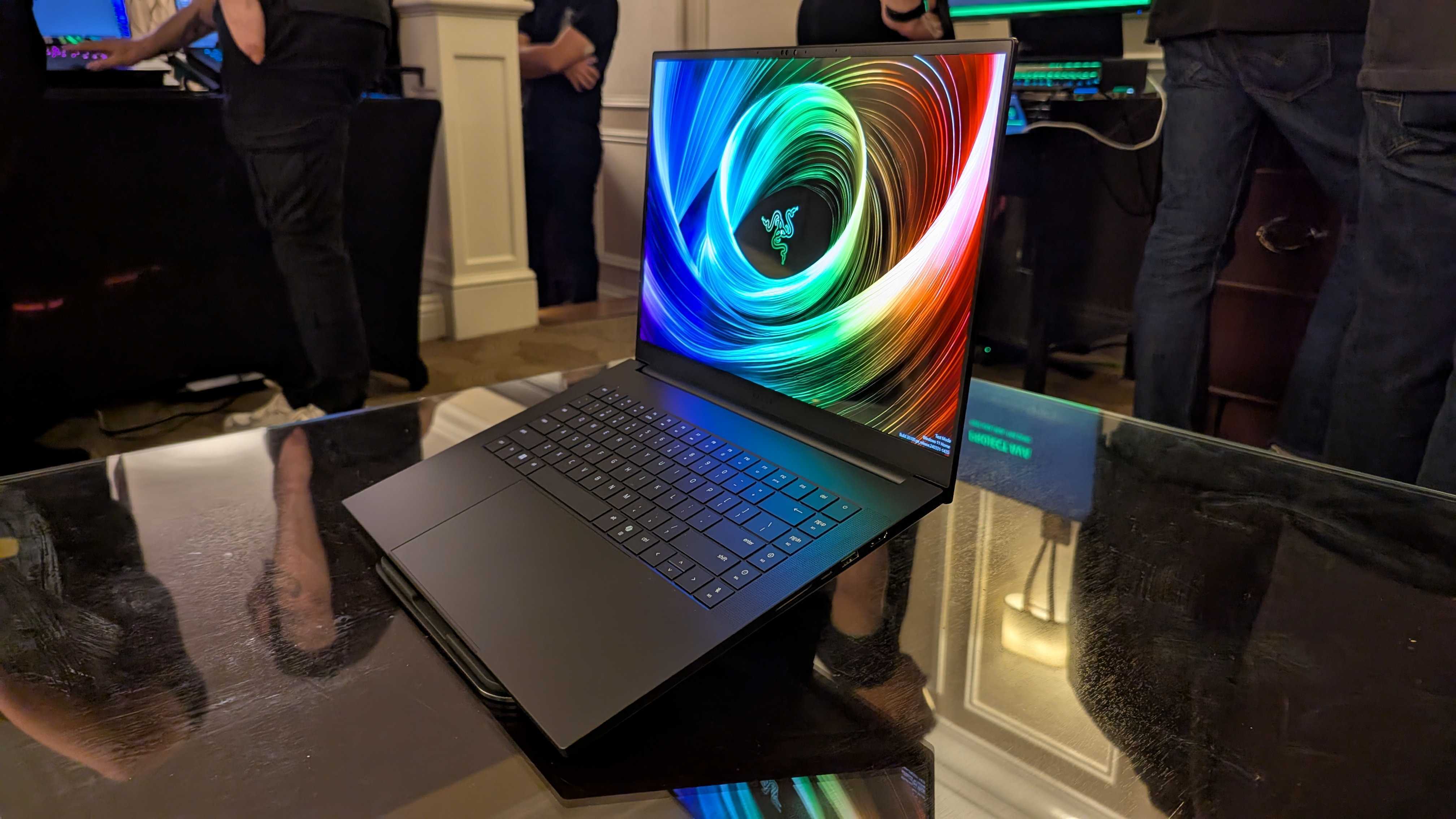
In my Razer Blade 16 (2024) review, I acknowledged Razer's peerless build quality but criticized the ultra-premium gaming laptop for its tired design, mediocre keyboard, and uncertain performance. Fast forward a year later, though, and Razer has finally redesigned its flagship Blade 16 with an all-new look... and some other massive changes that earned it our "Best Gaming Laptop of CES 2025" award.
The Razer Blade 16 (2025) is officially the thinnest gaming laptop Razer has ever made at just under 15mm thick (compared to 22mm last year), and the sleeker profile looks absolutely incredible. You don't lose any ports, though, and Razer still found room for an overhauled keyboard with 50% more travel and more tactile, durable switches. The new Blade 16 may be the most attractive gaming laptop I've ever seen, but we're not losing features.
Razer also made a significant shift with the Blade 16. For the first time ever in a hero device, Razer has left Intel behind in favor of AMD Ryzen AI chips. That's a big deal; not only is the Razer Blade 16 thinner, lighter, and cooler because of the shift, but it's also a Copilot+ PC with a full-powered Neural Processing Unit (NPU) under the hood. All that, and you still get up to the brand-new NVIDIA GeForce RTX 5090 GPU to power all your games.
The Razer Blade 16 (2025) is still a few months away and we don't have any pricing information yet, but that hasn't put a damper on my excitement. I went hands-on with this laptop and was able to compare it directly to its predecessor, and the differences are remarkable. Razer may have something very special on its hands, and you can find more information at Razer.com.
4. XREAL One Pro
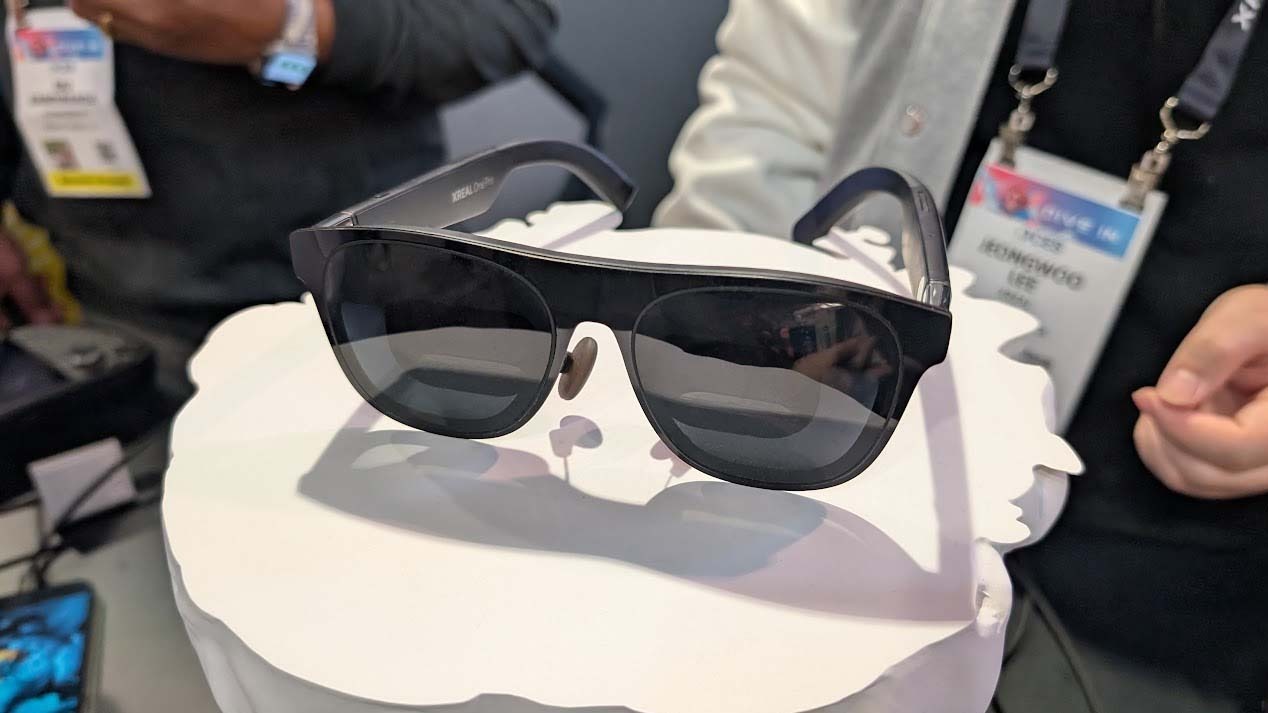
I nearly didn't have an opportunity to visit XREAL during CES 2025 and check out its latest products, but inclement weather close to home had the unintended side effect of keeping me in Las Vegas for an extra day. I've been a fan of XREAL since seeing them at GDC 2024 and spending some time with a pair of XREAL Air 2 Pro AR glasses at home, but a lot has changed since then. Now, XREAL is diving into its own custom AR-focused silicon, enabling new experiences for its latest products.
At CES 2025, I was able to check out the new XREAL One and One Pro AR glasses, which are thinner, smarter, and more premium. Powered by the XREAL X1 AR chip and boasting larger, more responsive displays, the XREAL One series also boasts 3DoF, meaning it supports spatial tracking in three directions. This allows you to anchor your private screens wherever you want, letting you look away without your content following you.
I played some of the Arkham series on the Xbox Series X while wearing the XREAL One Pro, and it's true that the internal displays are larger and better looking. These glasses feel like a next-gen bump in basically every regard, and represent a new era for XREAL. Being able to gain a massive, private display with full spatial audio wherever you are and with whatever device you're using has proven to be a tempting proposition already, but XREAL is looking to cement its dominance with the One series.
The new XREAL One is already available for $499 at XREAL, while the One Pro (which gets you an even wider field-of-view and three-stage electrochromic lens for variable tint) is expected to begin shipping in Mar. 2025 from $599 at XREAL.
5. Lenovo Yoga Slim 9i 14 (Gen 10)
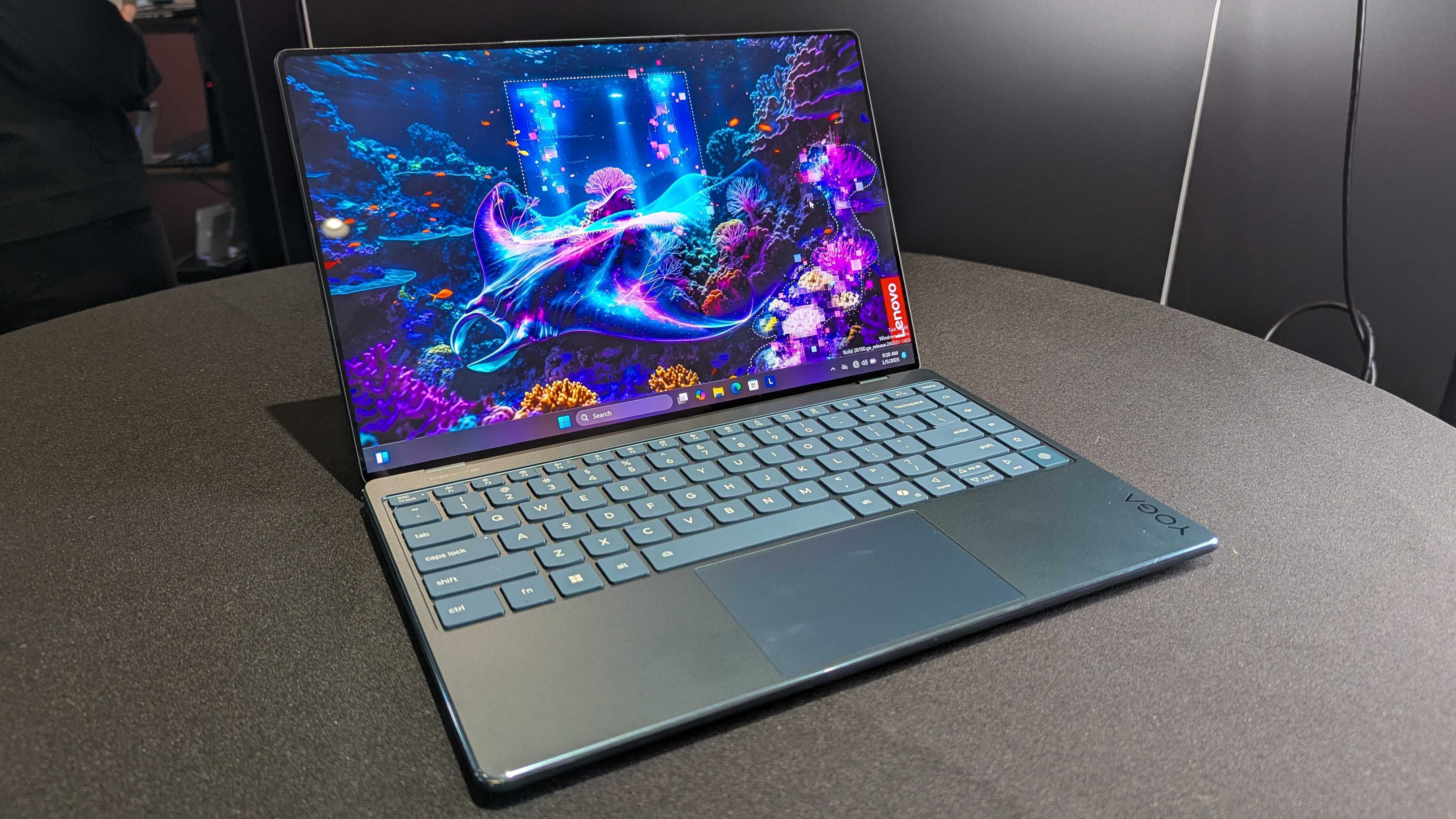
If you want to talk aesthetics, you can't possibly ignore the new Lenovo Yoga Slim 9i 14 (Gen 10). The winner of our "Best Ultrabook of CES 2025" award, the Yoga Slim 9i may take the cake for Lenovo's most beautiful laptop ever — and I've been a fan of Lenovo's flagship devices for years. The iconic design language we've come to love, including the aversion to any sharp edges and the recognizable "Communications Bar" on the lid, is now joined by a gorgeous "cat eye-like 3D sheen" on the lid courtesy of a pane of durable Gorilla Glass.
It makes for the shiniest laptop I've seen in a long while, but that's not quite what makes this laptop stand out. No, that would be the display. Lenovo's "PureSight Pro" 4K OLED panel returns with a smooth 120Hz refresh rate, 100% of all three major color gamuts with factory calibration, 750 nits of peak brightness, and a record-holding 98% screen-to-body ratio. That means the Yoga Slim 9i is almost entirely screen, and that screen is sharper, faster, brighter, and more color-accurate than the vast majority of laptop displays.
What makes that 98% screen-to-body ratio possible is an under-display front-facing camera, a first for the mainstream laptop industry. A 32MP camera sensor is cleverly hidden under the OLED screen, which disables those disguising pixels when you need to record and returns to a seamless viewing experience when you don't. It's hard to describe just how striking this laptop is visually, but under the hood, it's still a Lenovo flagship ultrabook with Intel Core Ultra (Series 2) and some impressively high-end hardware.
The glass touchpad is on the small side thanks to the laptop being smaller in general than your normal 14-inch machine, and there's no haptic touchpad option this time around, but I still can't wait for it. The Lenovo Yoga Slim 9i 14 (Gen 10) launches in Feb. 2025, but it's available to preorder now from $1,759.99 at Lenovo.
6. ASUS ROG Flow Z13 (2025)
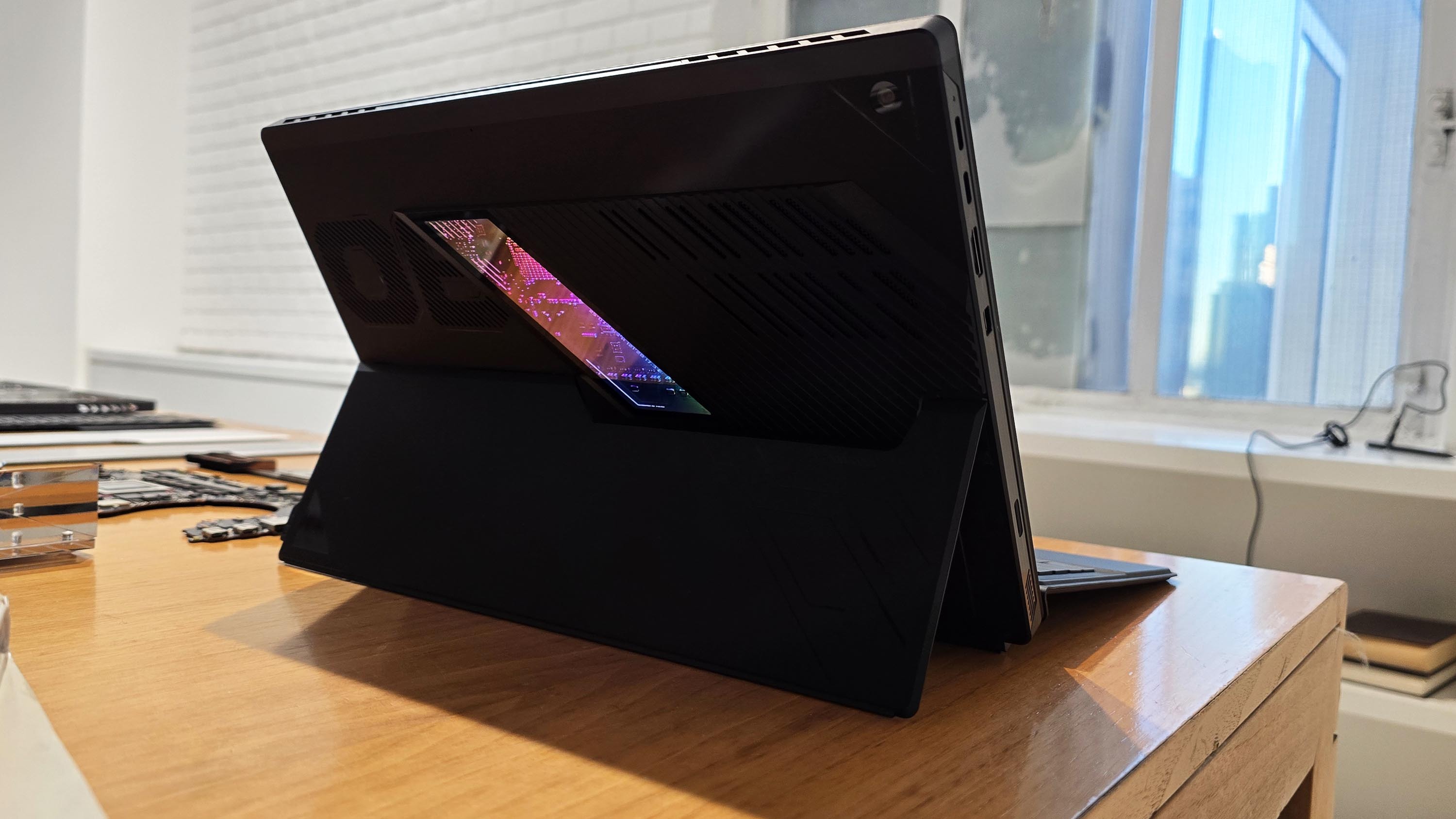
One of the oddest laptops revealed at CES and our winner of the "Best 2-in-1 Laptop of CES 2025" award, the ASUS ROG Flow Z13 (2025), is otherwise known as the "Surface Pro for gamers." It's a Windows tablet with a built-in kickstand, detachable keyboard, and active stylus support, but it's also a capable gaming laptop with AMD's most powerful Ryzen AI MAX+ chipset and its beefy RDNA 3.5 integrated GPU.
You're getting a crispy 13.4-inch IPS LCD, QHD+ display with a 180Hz refresh rate, a rugged gamer-ized aluminum chassis coming in at 13mm thick, and a unique RGB-lit rear window giving you a peek at the Flow Z13's internals. To be frank, I adore this hardware, and I love that companies like ASUS are still making weird products like this. There's not a huge market for a Surface Pro-esque laptop aimed at gamers, but the ASUS ROG Flow Z13 is still here, and that's awesome.
The ROG Flow Z13 isn't liable to compete directly with the Razer Blade 16 or anything like that, but it's a Copilot+ PC with a more powerful CPU and GPU than what you'll find in even the most powerful PC gaming handhelds, so the ROG Flow Z13 has more than enough firepower to play all the latest and greatest PC games. You can also get it with an absurd 128GB of ultra-fast RAM, and there's a beefy 70Whr battery under the hood to hopefully keep things running for more than a handful of hours.
There's a major soft spot in my heart for Windows tablets and another for quirky gaming PCs, so this is right up my alley. Bound for a 2025 release, the ASUS ROG Flow Z13 (2025) will be available from $1,999.99 at ASUS when it becomes available, firmly placing it in the premium segment.
7. Razer Immersive Ecosystem
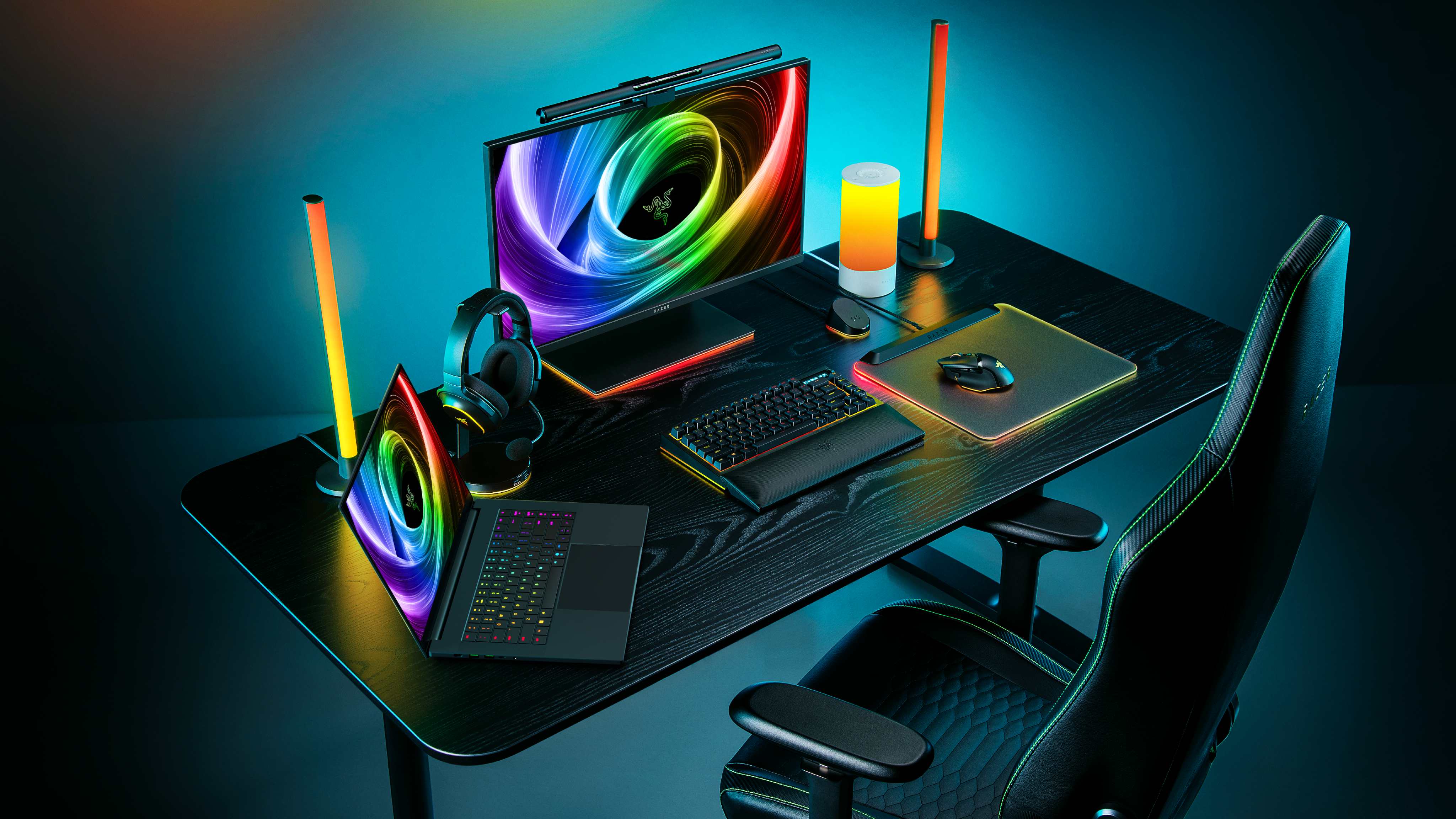
Finally, I want to highlight the Razer Immersive Ecosystem, a new initiative speared by a rebuilt Razer Chroma engine. I recently reviewed the Razer Gamer Room, a family of Aether smart home light products that immediately made Razer one of the best options in the category. Now, that product lineup is expanding alongside deeper integration with Razer's other "immersive" technologies.
For sound, you have 7.1 spatial audio driven by Razer's partnership with THX; for touch, you have SensaHD Haptics built into products like the Razer Kraken V4 Pro headset I reviewed and the Razer Freyja seat cushion my colleague reviewed; for sight, you have Razer Chroma, the world's most comprehensive RGB lighting ecosystem with dozens of supported accessories, peripherals, and lights from Razer and third-party partners. The "Razer Immersive Ecosystem" brings all of those individual pieces together.
At CES 2025, I had the opportunity to see what the new Razer Chroma engine is capable of with an exclusive hands-on demo of Dune: Awakening. Soon, Chroma will be able to have full 3D spatial awareness of the exact positioning of all your connected devices and can intelligently sync them all to whatever's on your screen. This can happen automatically, but the best experience is when a developer custom tailors their game to the Razer Immersive Ecosystem.
With a prototype Razer Wolverine V3 Pro controller with Razer SensaHD Haptics and a complete Razer gaming setup, I enjoyed responsive and precise audio, visual, and tactile feedback. The lighting matched the environment and reacted to my movements, actions, and gunfire; the haptics responded to recoil, incoming fire, and collisions; the speakers ensured I was aware of everything happening around me. It was a novel experience and isn't a single product I can refer you to, but it was definitely one of the coolest single demos I experienced at CES.
You can find more information on the Razer Immersive Ecosystem at Razer.com.






